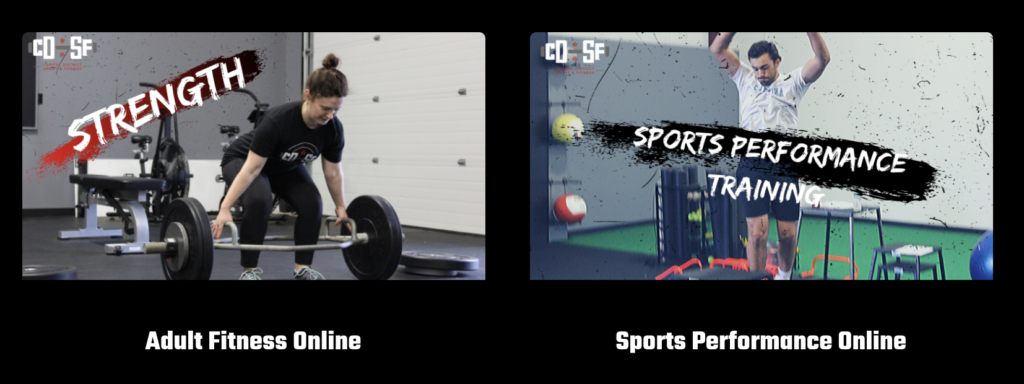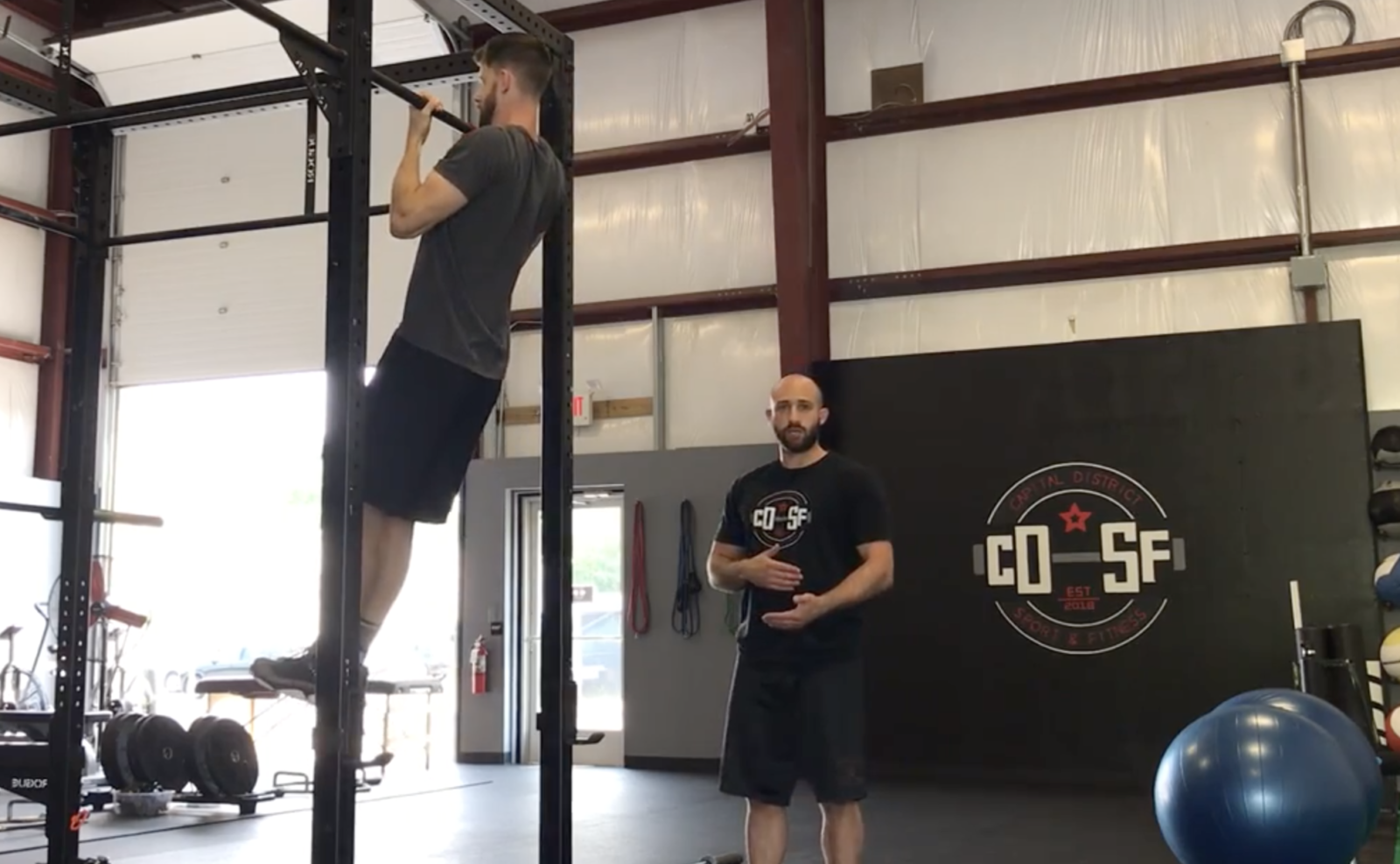When asked why pull-ups are a part of your training program, you’ll likely respond with one of four answers:
1. To improve your upper body strength
2. To increase the size and improve the appearance of your upper back
3. You were told to do them
4. They’re your favorite activity
The pull-up is a staple in almost everyone’s strength and conditioning program, and rightfully so; pull-ups are one of the best ways to train your lats. Your lats are very strong and powerful extenders, adductors, and internal rotators of your shoulder. They also aid in respiration and have an influence on extension at your thoracolumbar junction.

Developing strong lats can drastically improve your performance if your sport or life requires throwing, climbing, or swimming. Strong lats are paramount for building a strong squat, bench, or deadlift, and they can keep your shoulders healthy while doing so. And if you’re all about aesthetics, there is no better way to get a sexy looking back than incorporating lat training into your program.
Aside from building strong lats and a great looking upper back, adding pull-ups to your training is also an excellent way to improve your shoulder function and train your scapula to move properly on your rib cage while challenging your anterior core.
Before you reap all the benefits of the pull-up, you first must know how to safely incorporate them into your workout routine.
To do so, ask yourself the following two questions:
1. Am I performing any of the common pull-up technique mistakes?
2. Is my body ready to perform pull-ups?
Common Pull-Up Mistakes
1. EXTENSION PATTERN
A common compensation many athletes and weight lifters use is to over-extend or arch through their mid and low back. Most of the time, you’ll see this occurring at the thoracolumbar junction or right around their T8 vertebrae. This is often due to issues with relative stiffness or a strong neurological drive that biases your body toward extension when things get tough. Lats and erector spinae will often overpower abdominal muscles, causing your abs to get long, back muscles to shorten, and leaving you with a ton of unnecessary movement through your mid and lower back.

2. POOR SCAPULAR & GLENOHUMERAL CONTROL
Bodyweight pull-ups are a lot further along the regression-progression list than you may think. It’s you and your bodyweight hanging from a bar vs. gravity. It’s easy to cheat and allow yourself to shrug and have your shoulder blades tilt forward while pulling up to the bar. Instead, you want to get good retraction, depression, and downward rotation of your scapula as you pull yourself up, then allow them to smoothly, upwardly rotate while keeping good control of your shoulder joint as you lower down.

3. FORWARD HEAD POSITION
When a pull-up is done correctly your chest will be the first part of your body to get to the bar. When you don’t have adequate upper body strength to get you to the end range of the exercise or you have poor control of your spine and rib cage you’ll compensate by diving your head in front of the bar to complete the rep.

4. NOT CHOOSING THE BEST VARIATION FOR YOU
Because of your anatomy, movement quality, and athletic history not every pull-up variation will be the best for you. Below we’ll go through some simple assessments to tell what pull-up variation is best for you.
Assessing Your Readiness to Perform Pull-Ups
1. SUPINE SHOULDER FLEXION
A pull-up requires nearly 180 degrees of shoulder flexion. This means your shoulder joint should be able to move into 180 degrees of shoulder flexion without compensation through your back. If it doesn’t, pull-ups are going to be a lot like trying to fit a square peg into a round hole.
2. STANDING SHOULDER FLEXION
Can you move your shoulder joint to 180 degrees of flexion without compensation against gravity?

3. WRIST SUPINATION & PRONATION
Because pull-up bars don’t move, it’s smart to test the range of motion of your wrist and hand. If you’re putting your radius, ulna, and hand into a range that you don’t have, you’ll be placing more stress on your elbow and wrist when performing pull-ups. Multi-gripped pull-up bars and rings will still make pull-ups a viable option for you even if you lack wrist supination or pronation.
4. YOUR ATHLETIC HISTORY
Because pull-ups place a high demand on your shoulder joint while in the overhead position, it may not be best for you to incorporate them into your program, especially if you’re currently in-season during an overhead sport like baseball, volleyball, or tennis, due to the added stress on your elbow and distraction forces to your shoulders.
5. SEATED LAT PULL-DOWN
I’ve found that performing a simple lat pull-down is one the best ways to assess how well someone is able to perform a pull-up. Those who are likely to perform a proper pull-up will exhibit good core control and balanced movement from their scapula and shoulder joints.
Get a friend to take a video of your lat pull-down and watch for:
· Rib cage staying down and back not over arching
· Scapula initiating the movement by retracting, depressing, and downwardly rotating
· Elbows driving into sides without excessive glenohumeral extension
· Head/Neck Positioning
If you can master the technique basics during a lat pull-down, your life will become much easier when it’s time for progressing your pull-ups.
The Game Plan
Once you know you’re clear for pull-ups, it’s time to put a plan together that will allow you to dominate them during your training sessions. Think of the below section like a choose your own adventure book for pull-ups. Choose what variation is going to be best for you, progress to being able to perform bodyweight reps, then go above and beyond with more challenging variations.
STEP 1: CHOOSE THE BEST VARIATION FOR YOU
Chin-Ups: Higher lat, pec, and bicep activation. Not the best variation if you lack wrist supination. Can also make you more prone to scapular anterior tilt and excessive glenohumeral movement.

Pull-Ups: Higher lower trap activation. Not the best variation if you lack wrist pronation.

Neutral Grip Pull-Ups: Best if you have a history of shoulder problems.

Ring Pull-Ups: Best option if you’re limited in supination or pronation or have had elbow issues because the rings allow radius and ulna to move more during rep.

STEP 2: PROGRESS TO BODYWEIGHT PULL-UPS
STEP 3: ABOVE AND BEYOND: PROGRESS TO MORE CHALLENGING PULL-UP VARIATIONS
Staying Healthy During Your Pull-Up Quest
Good technique, smart exercise progressions, and a gradual increase in volume are the best things you can do for staying healthy when adding pull-ups into your training program. Even if you’ve chosen the best variation for you and have smart programming, you still need to be making sure you’re counteracting the stress pull-ups place on your shoulder and elbow joints. Below are a few “stay healthy” strategies you can use before or after a pull-up session:
In Summary
Whether you want to use pull-ups to increase your upper body strength, improve how your upper back looks, or because strong lats have a high degree of carry over to your sport, make sure you come up with an educated plan before haphazardly throwing them into your program. Know if you have enough range of motion to perform pull-ups, choose what variation is best for you, build to being able to perform bodyweight reps, and put a smart plan into action.
Do You Want to Get Strong & Feel Your Best?
Check Out our Online Adult Fitness and Sports Performance Programs designed by our coaching staff using the same principles we use at our facility with our adult fitness clients and athletes.


